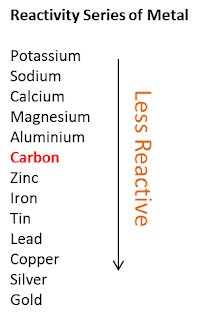

Rinse the pipette well with water afterwards. Label this row with the name of the solution. Using a dropping pipette, put a little of the zinc sulfate (or nitrate) solution in four of the depressions in the spotting tile, using the illustration below as a guide.Lead foil, Pb(s), (TOXIC, DANGEROUS FOR THE ENVIRONMENT) – see CLEAPSS Hazcard HC056.Zinc foil, Zn(s) – see CLEAPSS Hazcard HC017.Magnesium ribbon, Mg(s) – see CLEAPSS Hazcard HC059a. Do NOT leave in a place where pupils would have potentially unsupervised access.Copper foil, Cu(s) – see CLEAPSS Hazcard HC026.Zinc sulfate solution, ZnSO 4(aq) – see CLEAPSS Hazcard HC108b.Magnesium sulfate solution, MgSO 4(aq) – see CLEAPSS Hazcard HC059c.Lead nitrate(V) solution, Pb(NO 3) 2(aq), (TOXIC, DANGEROUS FOR THE ENVIRONMENT) – see CLEAPSS Hazcard HC057a.Copper(II) sulfate solution, CuSO 4(aq) – see CLEAPSS Hazcard HC027c.


Read our standard health and safety guidance.Metals should be approximately 1 cm lengths or squares of ribbon or foil cleaned with emery paper and as similar in size as possible.Solutions may be dispensed in 5 cm 3 beakers to each pair of students or in small bottles fitted with droppers to groups of students.Lead foil (TOXIC, DANGEROUS FOR THE ENVIRONMENT).Five samples, approximately 1 cm lengths or squares, of each the following metals (note 2):.Lead(II) nitrate (TOXIC, DANGEROUS FOR THE ENVIRONMENT).Felt tip pen or other means of labellingĪccess to about 5 cm 3 each of the following 0.1 M metal salt solutions (note 1):.Spotting tile, with at least 16 depressions (or two smaller tiles).The experiment should take about 30 minutes. There should be no flames alight so that students are not tempted to burn pieces of magnesium and the teacher should be alert to the possibility of pieces of magnesium being removed from the laboratory. The teacher should keep control of the magnesium ribbon, dispensing short lengths when required. Solutions could be distributed in test tubes, or in small bottles fitted with droppers for sharing between several pairs of students. RSC Yusuf Hamied Inspirational Science ProgrammeĪ version of this experiment is included in our Reactivity of metals video (from 10:35), along with supporting resources, including illustrated technician notes, integrated instructions, worksheets, a structure strip and more.Ĭareful thought needs to be given to distribution of the chemicals to the class.Introductory maths for higher education.The physics of restoration and conservation.


 0 kommentar(er)
0 kommentar(er)
